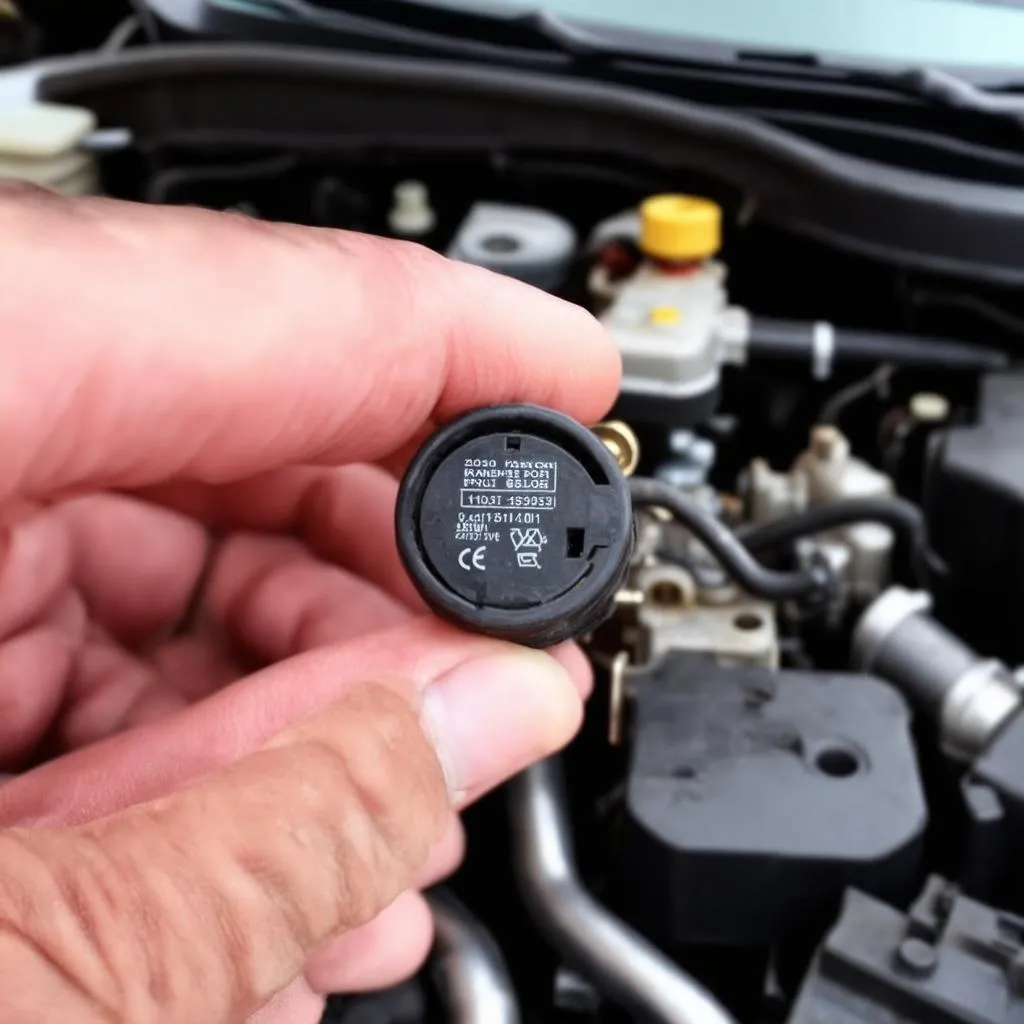Have you ever been cruising down the road in your trusty 2003 Honda Pilot, only to be met with a blinking check engine light and that sinking feeling of dread? You hook up your trusty OBD II scanner, hoping for the best, but it spits out a cryptic code: P0705. Don’t panic! We’re here to decode this automotive mystery and guide you towards a solution.
What Does the P0705 Code Mean?
The P0705 code, in simple terms, indicates a problem with your Honda Pilot’s transmission range sensor (TRS) circuit. Think of the TRS as the interpreter between your gear shifter (where you select Park, Reverse, Neutral, Drive) and the transmission control module (TCM), the brain behind your vehicle’s shifting. The TRS sends a signal to the TCM telling it what gear you’ve selected. When the P0705 code pops up, it means the TCM is receiving an erratic or illogical signal from the TRS, throwing a wrench into your smooth driving experience.
Why Should You Care About the P0705 Code?
You might be tempted to ignore a blinking check engine light, especially if your Pilot seems to be driving fine. But trust us, addressing the P0705 code promptly is crucial. Here’s why:
- Safety First: A malfunctioning TRS can lead to unpredictable shifting behavior, increasing the risk of accidents.
- Transmission Protection: Ignoring the issue could exacerbate existing damage to your transmission, leading to costly repairs down the line.
- Fuel Efficiency: A confused TCM can wreak havoc on your fuel economy, leaving you making more frequent trips to the gas station.
Common Causes of the P0705 Code
Now that you understand the “why,” let’s dive into the “what” that might be causing this troublesome code in your Honda Pilot:
- Faulty Transmission Range Sensor: This is often the main culprit. The sensor itself might be worn out, damaged, or misaligned.
- Wiring Issues: The wiring harness connecting the TRS to the TCM could be frayed, corroded, or damaged, disrupting the signal.
- Transmission Fluid Problems: Low or contaminated transmission fluid can impact the TRS’s performance.
- TCM Malfunction: While less common, a faulty TCM could also be misinterpreting the signals from the TRS.
How to Tackle the P0705 Code
Before you start tearing apart your Pilot, let’s approach the P0705 code systematically:
- Check the Transmission Fluid: Ensure the fluid level is adequate and the fluid itself is clean and free of debris.
- Inspect the Wiring: Carefully examine the TRS wiring harness for any visible damage, loose connections, or corrosion.
- Test the Transmission Range Sensor: A multimeter can be used to test the sensor’s resistance and ensure it’s within the manufacturer’s specifications.
- Consult a Professional: If you’re uncomfortable with electrical diagnosis or if the problem persists, it’s best to consult a qualified mechanic, especially one specializing in Honda transmissions.
 Transmission range sensor
Transmission range sensor
Frequently Asked Questions about the P0705 Code
Q: Can I still drive my Honda Pilot with a P0705 code?
While you might be able to drive for a short distance, it’s highly discouraged. Unpredictable shifting could put you and others at risk.
Q: How expensive is it to fix a P0705 code?
The cost can vary greatly depending on the underlying cause. A simple sensor replacement might be relatively affordable, while a transmission rebuild could be significantly more expensive.
Q: Can I fix the P0705 code myself?
If you’re mechanically inclined and comfortable with electrical diagnostics, you might be able to handle the repair yourself. However, if in doubt, seeking professional help is always recommended.
Beyond the Technical: A Holistic Perspective
Interestingly, some car enthusiasts believe that recurring car troubles, especially those related to control and decision-making (like a faulty TRS), can be symbolic of feeling stuck or indecisive in life. While there’s no scientific evidence to support this, it’s a fun thought experiment to consider if you’re inclined towards such interpretations.
Stay Informed, Drive Safe!
We hope this guide has shed light on the enigmatic P0705 code and empowered you to take the right steps to get your 2003 Honda Pilot shifting smoothly again. Remember, a little knowledge goes a long way in the world of automotive repair!
 Honda Pilot on scenic drive
Honda Pilot on scenic drive
Need help diagnosing your car troubles? Contact us on Whatsapp at +84767531508. Our team of auto experts is available 24/7 to provide guidance and support with all your diagnostic tool needs!
Looking for more helpful tips and insights on car maintenance and repair? Check out these other articles on techcarusa.com:
- Common Honda Pilot Transmission Problems
- Understanding OBD II Codes
- DIY Car Maintenance Tips
Let us know in the comments below if you found this article helpful or if you have any other questions about the P0705 code or your Honda Pilot. Happy driving!